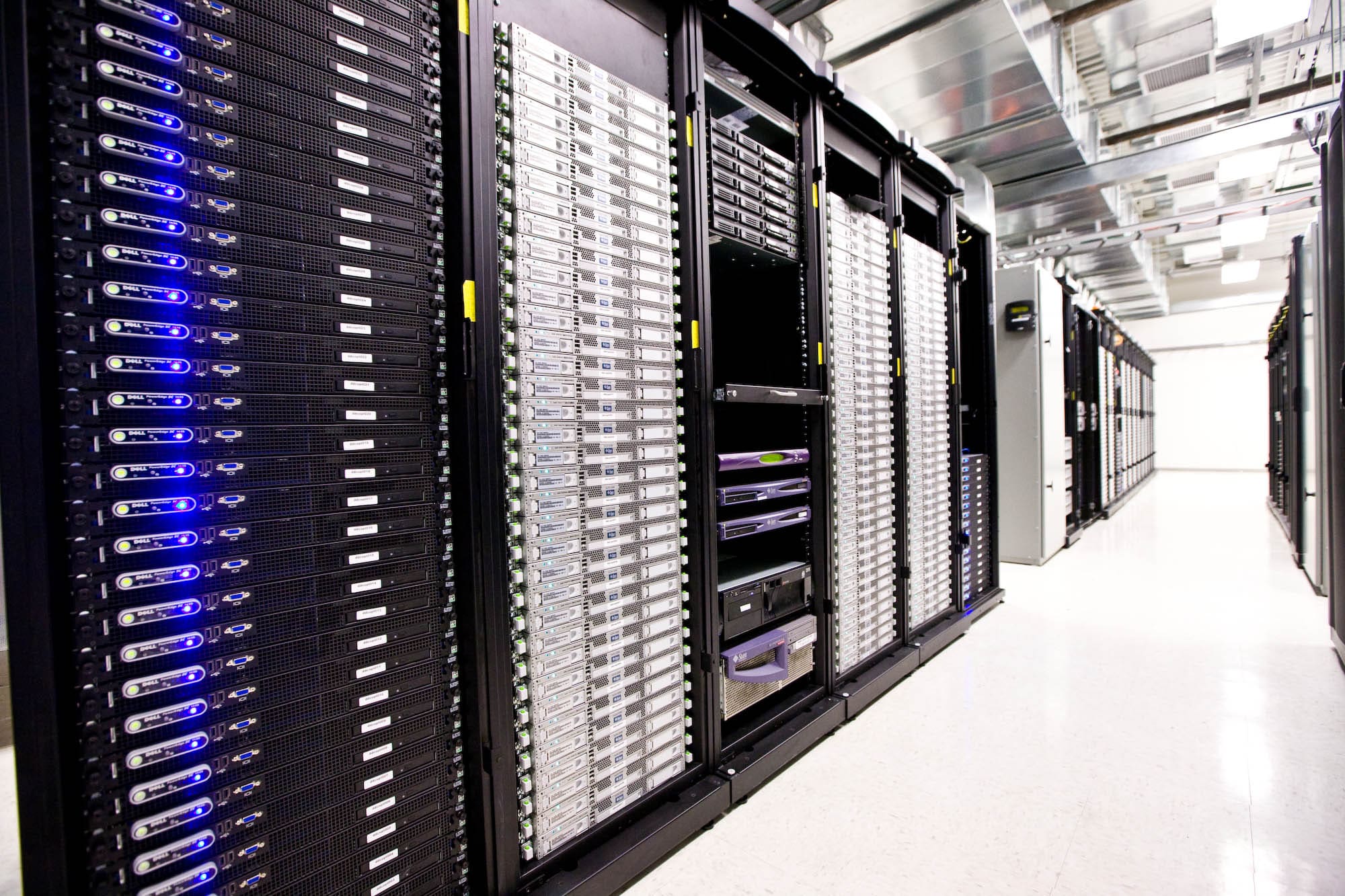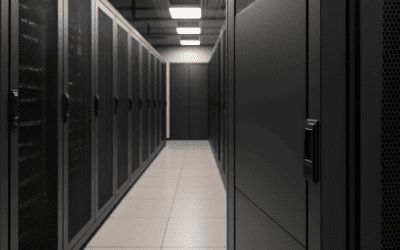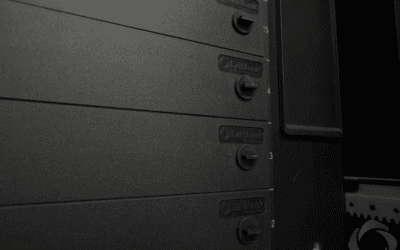The Ultimate Data Center Guide
You have probably heard the term Data Center used and wondered what it is and why you need it. Or perhaps you are looking for information because you are at the point of needing a Data Center.
Well whichever the case, don’t stress! We are here to give you the 411 on all things Data Center-related.
In fact, by the time you read this you should be an expert on Data Centers or at least know if you need one and how it could benefit your business.
So let’s delve into the deep, dark ocean of cables otherwise known as the Data Center.
In the article:
[—ATOC—]
[—TAG:h2—]
What Is A Data Center?
These hulking, humming warehouses of hardware and software store and manage all the information we create or consume online – everything from e-mails to Instagram posts, from Google searches to Netflix binges.
Without them, our hyper-connected society would come screeching to a halt.
Data centers are also engines for innovation, providing ever more powerful tools for everything from artificial intelligence research to Hollywood special effects. They even provide power grids with greater security against cyberattacks and natural disasters.
To break it down even simpler, it is a physical place to store and compute data.
A data center can vary in size and type, and how it is used will come down to the type of company you have and what resources are required at all times.
Why are Data Centers important?
If you are running a business, the chances are that you will need to store data – whether it’s for their email, website, online transactions, and much more – all of which you will need to store on a server.
A server is a specialised computer which is connected to the business’ local network as well as the internet. If a business is small enough, they may choose to store their servers on site and manage them independently. However, as they grow, more data may be generated, so they may need more space for more servers.
If a business has the space and the capacity to maintain their servers, then a dedicated server room on-site may be the right option. Since servers run 24/7 they do produce a lot of heat and therefore require lots of cooling so they don’t overheat. The amount of energy required to do this can lead to a costly electricity bill. It is also necessary to monitor the servers around the clock to ensure data isn’t compromised in something like a power outage or worse, a cyber attack.
And here is where our friend, The Data Center, comes into play.
A business can pay for space and power to house their data. Epic right? Well, this would include housing your servers in a secure, supervised, temperature-controlled facility that has back-up power supplies to ensure you won’t be compromised. This gives the business less time worrying about infrastructure management and more time focusing on the things they specialise in.
So, is a data center important?
Why yes, it is!
What is in a Data Center?
Every data center is different and explaining exactly what is in a data center is kind of like trying to tell you what is in Mary Poppins’ bag (with a bag that’s full of never ending goodies, we could be here a while).
Basically, a data center will vary from one location to another. None of them are the same and all of them have different requirements.
Commonly, you may find:
Servers
A powerful computer or system that provides resources, data, services, or programs to other computers (a.k.a clients) over a network.
Routers
A router receives and sends data on computer networks. They are kind of like a traffic controller on the internet.
Switches
Used to connect multiple devices on the same network within the data center. It will connect servers and create a network, serving as a controller, which allows the devices to talk to each other and share information.
Firewalls
The main goal of a firewall is to separate the secured and unsecured parts of the network. They protect the network by filtering traffic and blocking outsiders from gaining unauthorised information.
Storage Systems
Data center storage generally refers to the devices, equipment and software technologies that enable data and application storage within a data center facility.
What else is in the Data Center Infrastructure?
When you take a look around a Data Center you can expect to find more than just the high tech stuff.
Expect to find physical equipment which keeps all servers up and running such as power cords and electrical plugs galore.
Data Centers generate a lot of heat also, so you will find some kind of data center cooling solution in place which could be in the form of fans, pipes filled with water and/or air conditioning units.
These are very secure places as they may house sensitive information, so expect to also see things like security cameras, locked doors, alarms, sensors, a security desk and if you’re lucky a handsome dude holding the fort.
And in case you thought that this was an area primarily inhabited by electronic life forms, you may also find some people around. Often you may see an office, meeting/conference room or lunch area for the staff members or human guests.
How big is a data center?
A Data Center can vary in size and it isn’t a one size fits all kind of set up. You may find a data centre as small as a few square feet or as large as a football field (or bigger!). Crazy Right?
Where is a data center located?
A data center can be anywhere technically. You may find it in the same building or externally, if required. It’s important that the data center is located somewhere with the following available:
- Constant electricity: even better if it can be generated on site for cheaper.
- Protection from the elements: out of reach of natural disasters and away from 100-year flood zones
- Close proximity: it should be close enough to business centers and fiber backbone routes
- Cooling equipment: whether it’s cold outside air, power for air conditioning or water for heat transfer
And this may blow your mind, but some data centers are actually located underwater or underground for cooling reasons. We think that is EPIC!
Are there different types of Data Centers?
There are many types of data centers and service models available. The classifications depends on a few things:
- How many organisations it is owned by
- How they fit into the topology of other data centers
- What technologies they use for computing and storage
- Their energy efficiency
Generally, there are four types:
Enterprise Data Centres
Often housed on the corporate campus, these are built, owned and operated by companies and optimised for their end users.
Colocation Data Centers
In colocation facilities, a company will rent space within a data center that is owned by others and located off the company’s premises. The colocation data center will host the infrastructure (building, security, cooling, bandwidth, ect) while the company provides and manages the components which may include servers, firewall and storage.
Cloud Data Centers
This is an off-premise type of data center where data and applications are hosted by a cloud services provider such as Amazon Web Services, Microsoft or IBM cloud. As an increasingly popular type, it may even be another public cloud provider.
Managed services data center
This facility will be managed by a third party (or a managed services provider) on behalf of a company. The company will lease the equipment and infrastructure instead of buying it.
What happens in a data center?
There are a broad range of answers for what happens in a data center depending on the location, why it was built and who uses it.
In colocation facilities or outsourced infrastructure overseen as part of a managed service, the kinds of compute services and tasks will vary from one company to another.
Some data centers may be just used for storing data backups while others deal with the whole hog of company core IT tasks.
Who manages the data center?
A data center can be managed by the company who built it (enterprise) or they can outsource their management to other companies (managed service).
In a colocation facility, a business who is renting out the space within a larger location, will be responsible for installing servers, racks, ect and maintaining this equipment. They will also have to pay for power and cooling, although the core power and cooling infrastructure is usually provided by the facility owner (who is also responsible for maintaining the building and providing security.
There is also another common situation where the company will rent out everything from a central provider. Said central provider owns and maintains everything inside the data centre and allows the company to purchase space and/or use of servers.
How is a cloud data center different?
When it comes to cloud data centers, the actual hardware is managed and run by the cloud company in question, usually with the help of a third-party managed services provider.
Their clients use the internet to run their applications and manage their data within a virtual infrastructure that operates on the cloud servers.
Is a data center different from a server room?
A data center is a facility where companies can store and process their data. The servers, storage equipment, power supplies and cooling systems are all housed inside these large buildings. Data centers can be either privately owned or managed by a cloud provider.
A server room is a space which houses, powers and cools one type of computer for use on the company’s premises. This space is usually not as large as a data center or colocation facility and will be in close proximity to the people who need access to it most often.
How many servers are in a data center?
It’s difficult to determine how many servers there are in a data center because there are different types of data centers and each one will fill the space in accordance with its needs.
Take a look at some of the Largest Data Centers In The World and see just how many you could fit!
When was the first data center created?
So back when cavemen roamed the earth and etched markings in stone… we are totally kidding!
The first data center was most likely built in the USA in 1946. It’s name was ENIAC (Electronic Numerical Integrator and Computer).
It was used for storing defence codes by the American Army and unlike our technology today, it was massive.
Why is power so important?
These days our laptops and mobiles stay on, even when the power goes out but the same can’t be same can’t be said for a data center.
Electricity is vitally important to the functioning of a data center.
It powers all the servers, which store and process all of the data for businesses.
Without power, there would be no servers.
The power supply must continue functioning 24 hours a day, 7 days a week for decades without interruption in order to provide uninterrupted access to data storage.
Data Center Infrastructure Lingo
So you want to learn the lingo when it comes to data center design?
Well, we have mentioned a few terms so far but here are some more commonly used terms which you will need to be familiar with:
Ampere (amp)
A unit of measurement of electronic current.
AC/DC
Not the band. We are talking alternating current or direct current.
Aisle
The open space between a row of racks.
ACAE
Air conditioning airflow efficiency – the amount of heat removed per standard cubic foot of airflow per minute
Blanking Panels
Blanking Panels make data center cooling systems run more efficiently by blocking the transfer of hot and cold air in empty rack space. They provide low-cost protection against overheating and can help <save you money on energy>.
Cabinet
A device for holding IT equipment (also known as a rack).
Cold Aisle
A cold aisle is an aisle where rack fronts face into the aisle. Chilled air flow is directed in this aisle so that it can enter the front of the racks.
CRAC
CRAC stands for “Computer room air conditioning” but crac sounds much more fun!
CRAH
Computer room air handler.
DCIE
Data center infrastructure efficiency – an efficiency measure that is calculated by dividing the IT equipment power consumption by the power consumption of the whole data center.
Hot Aisle
A hot aisle is an aisle where rack backs face into the aisle. Heated exhaust air from the equipment in the racks flows into this aisle and is directed to the CRAC return vents.
HVAC
Heating, ventilation and air conditioning system.
In-Row Cooling
This refers to cooling technology installed between racks in a row that draws warm air from the hot aisle and delivers cool air to the cold aisle, minimising the path of the air.
kW
Kilowatts are one thousand watts. kWh is a common unit of electrical energy.
kVA
Kilovolt Amperes is the total of voltage x current (amperage).
MW
Mega Watt is a measure of power equal to one million watts. Used in data centers to describe the size in terms of power capacity.
PUE
Power Usage Effectiveness is a measure of data center efficiency calculated by dividing the total data center energy consumption by the energy consumption of the IT computing equipment.
Volt
A unit of electrical potential.
Watt
A watt is a unit of power.
Data center statistics that will blow your mind
Crazy, but true! Just in case we haven’t blown your mind about the basics of data centers, here are some facts that might just knock your socks off:
- There are over 300 Google data centers in the world, with nine located in the US alone.
- Big data centres can have water cooling towers that can produce as much as 10 liters of clean water per minute.
- Originally, data centers were just rooms filled with computers and wires that would “talk” to each other.
- Data centers upgrade to new IT equipment every three to five years (not so much to be cool but to increase efficiency and improve the infrastructure).
- There is such a thing as a sustainable data center more commonly known as a green data center working purely from the magic of green energy! An example is Yahoo’s green data center which is powered by a hydroelectric plant in Niagara Falls.
- Modern Data center facilities are designed to withstand natural disasters. Including winds up to 200km/h and earthquakes of 9.0 magnitude. They sometimes have fences and some companies go the extra mile to protect their data center. In fact, one well known institute has built a moat around theirs.. EPIC!
- A self contained data center has been built underwater in a project by a large industry business which could be paving the way for further data center infrastructure hidden in the deep dark blue.
- One of the best digital infrastructures in the world is in the Netherlands connecting countries like the USA and Europe.
So is that it?
Well, we could go on and on about data centers, so much so that we could probably write a book. Or maybe a short story (with pictures!)..
But in all seriousness, when it comes to data center design and infrastructure , it is critical for you to think of the future of your business and the type of data center that will suit your needs.
For more information on data center cooling, energy efficiency , infrastructure data and just general amazing data center information, head to our info hub which is updated with the latest resources to keep you in the know.
Or if you’re already an expert and looking for some ways to reduce energy and save some moolah, head to our product page where you can find useful information on products such as blanking panels and floor tiles .
Now, we are confident you know what we’re talking about!





